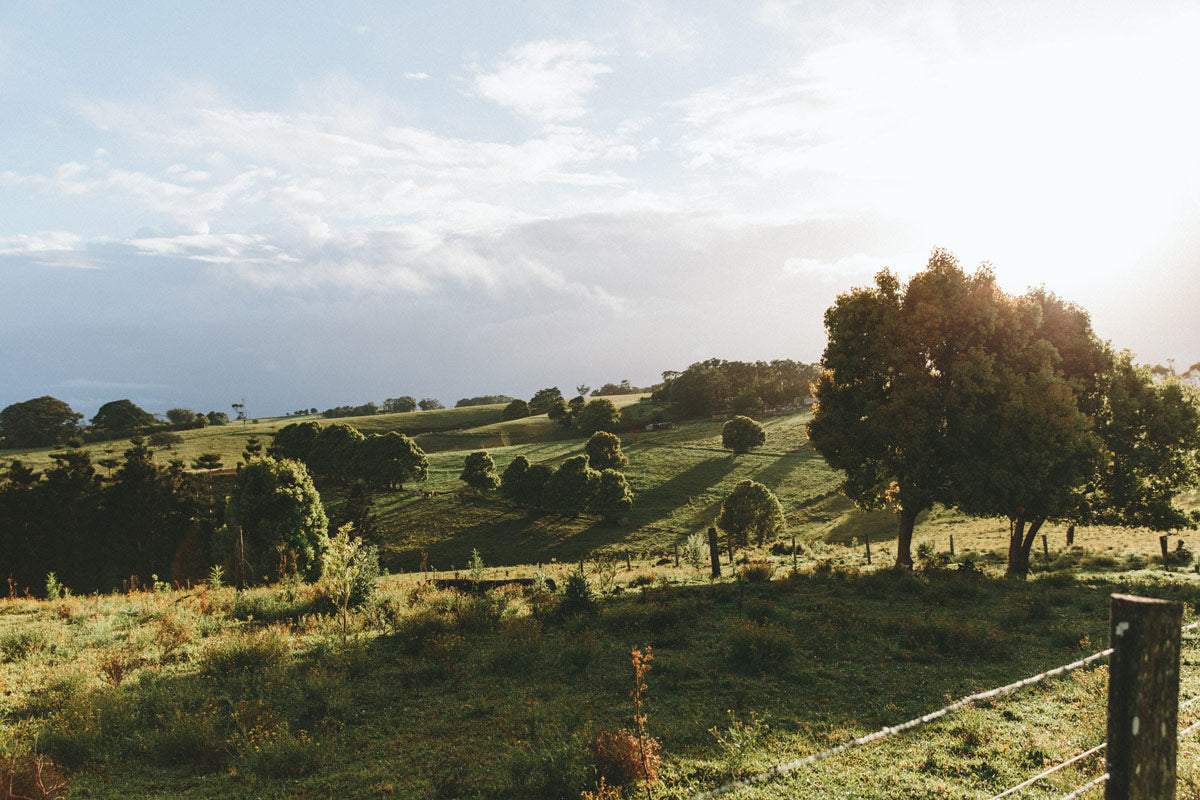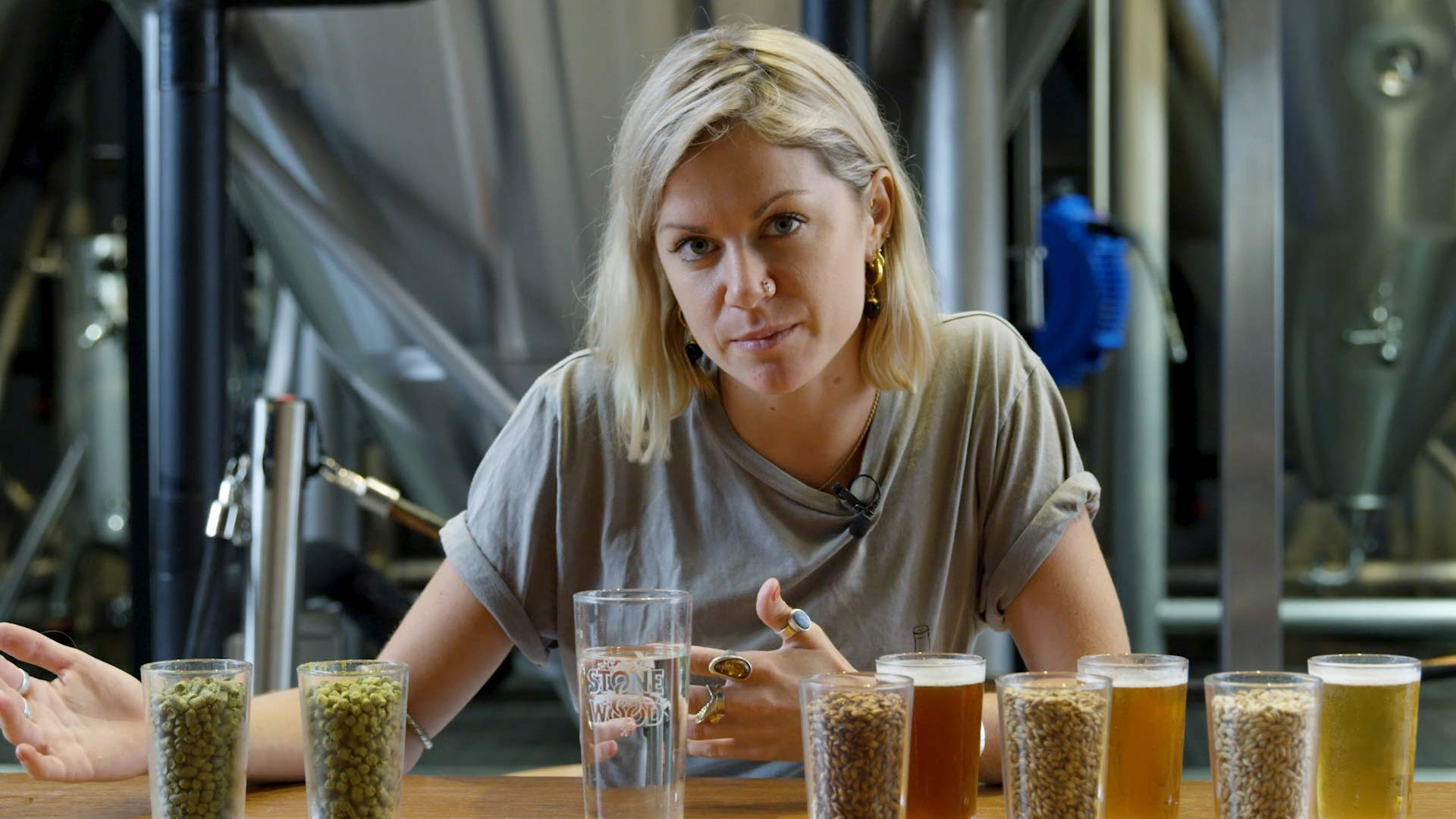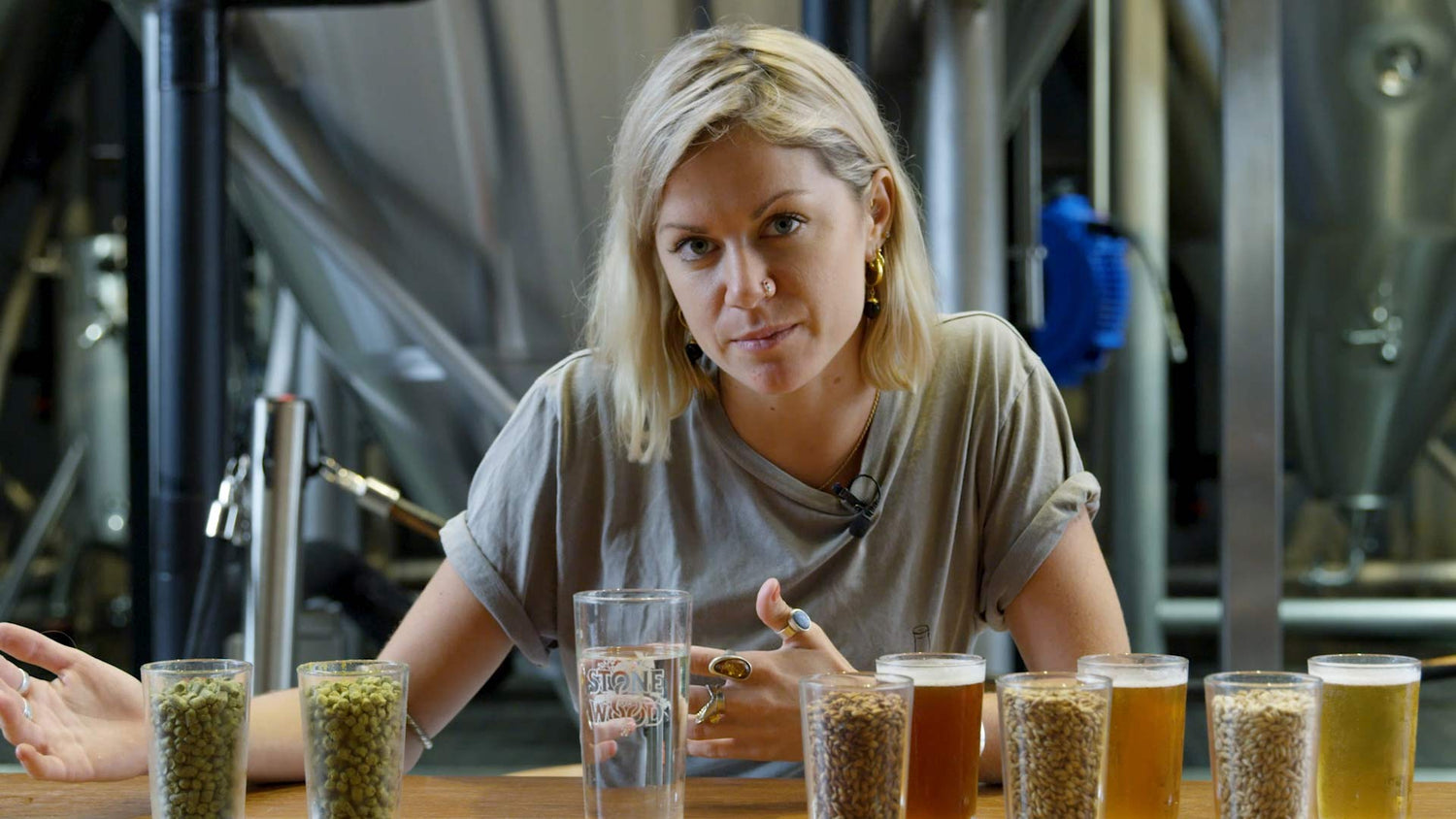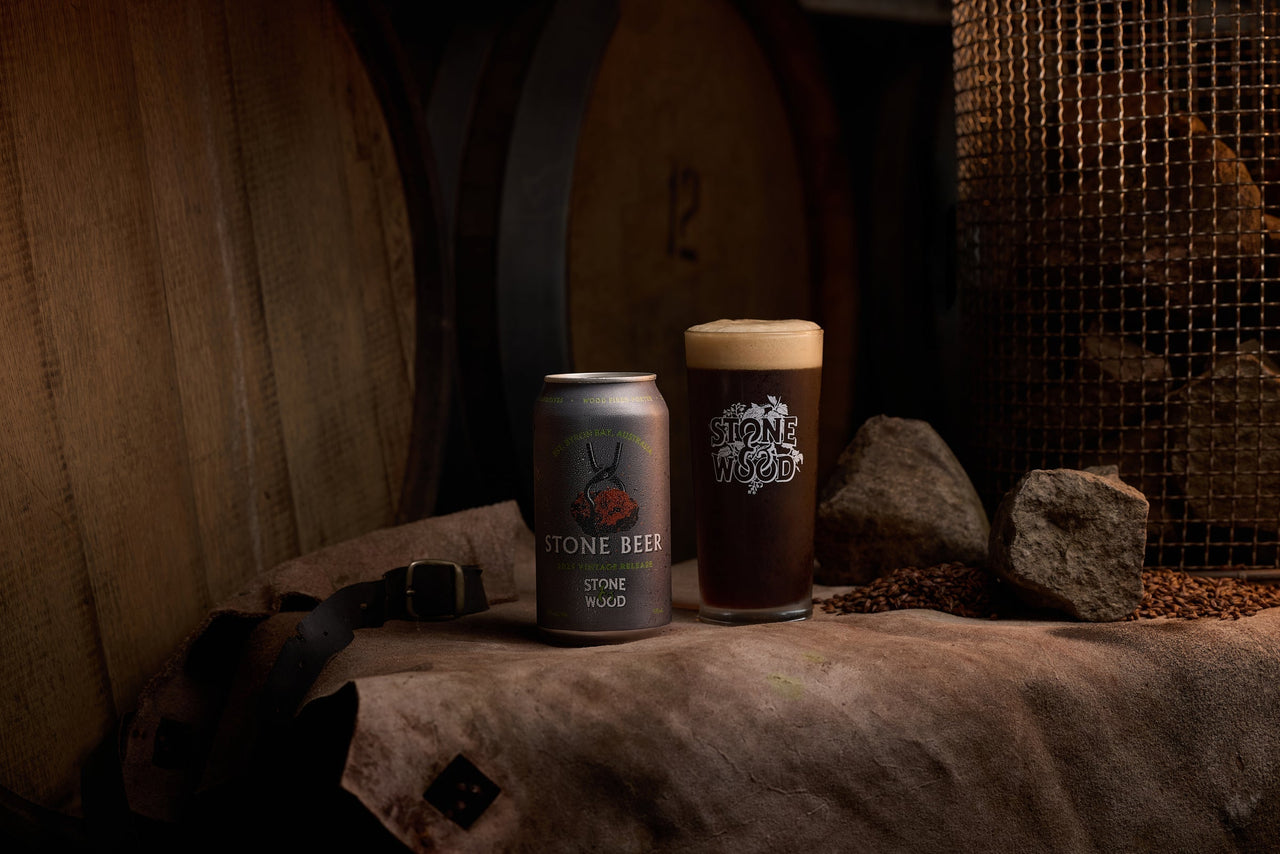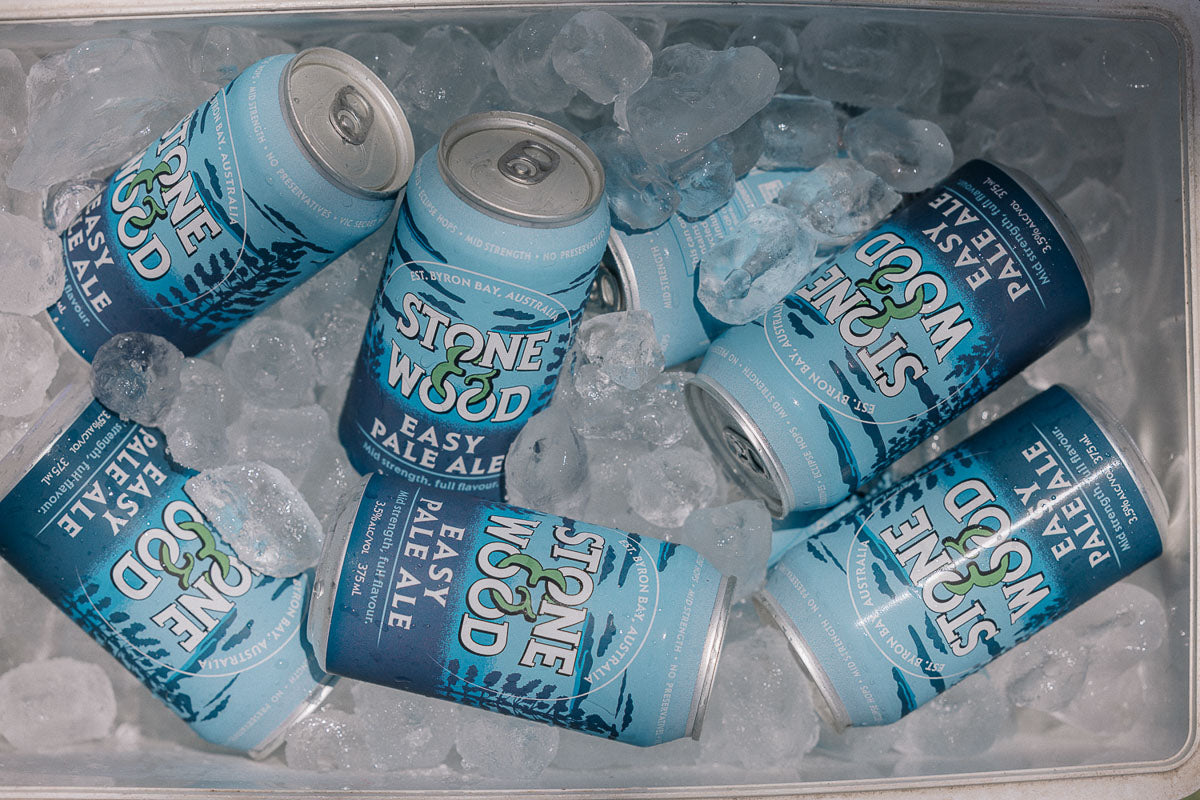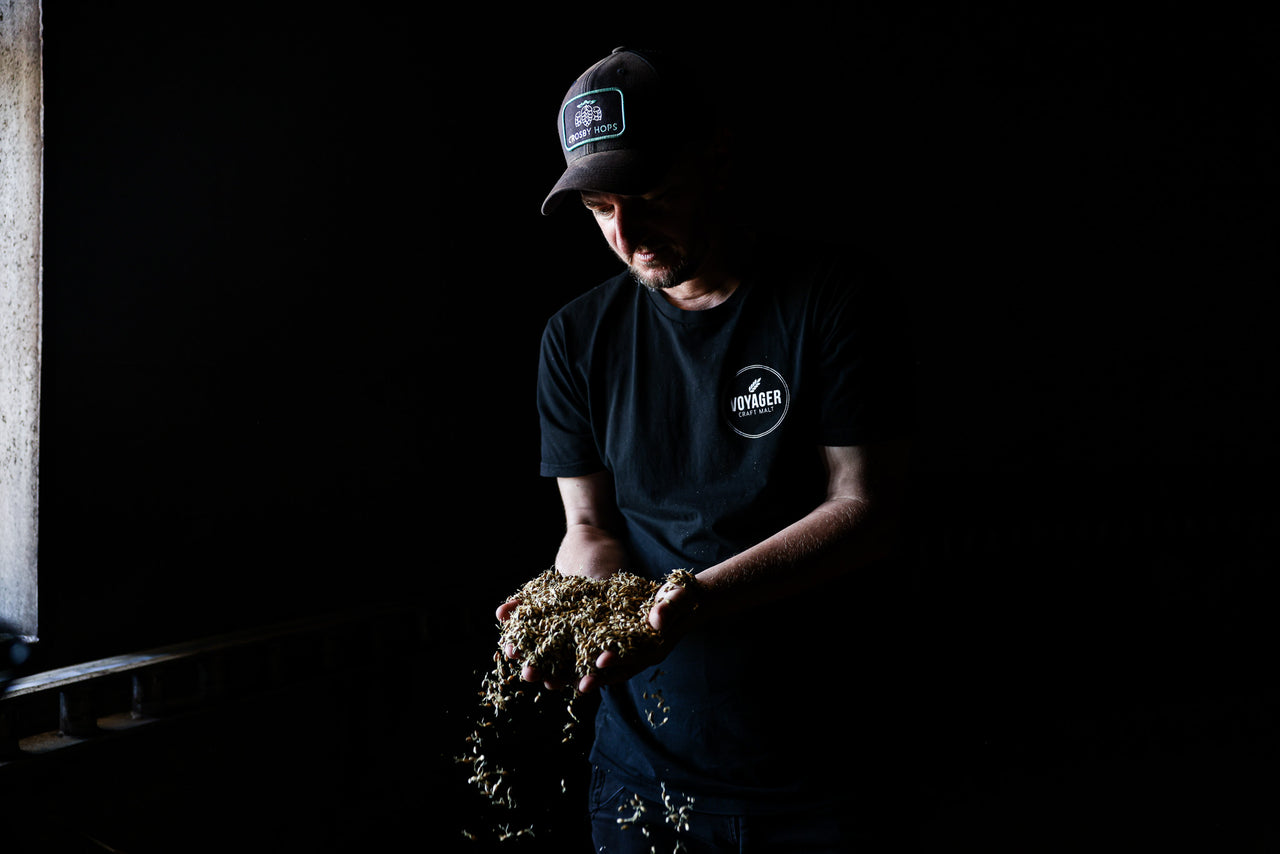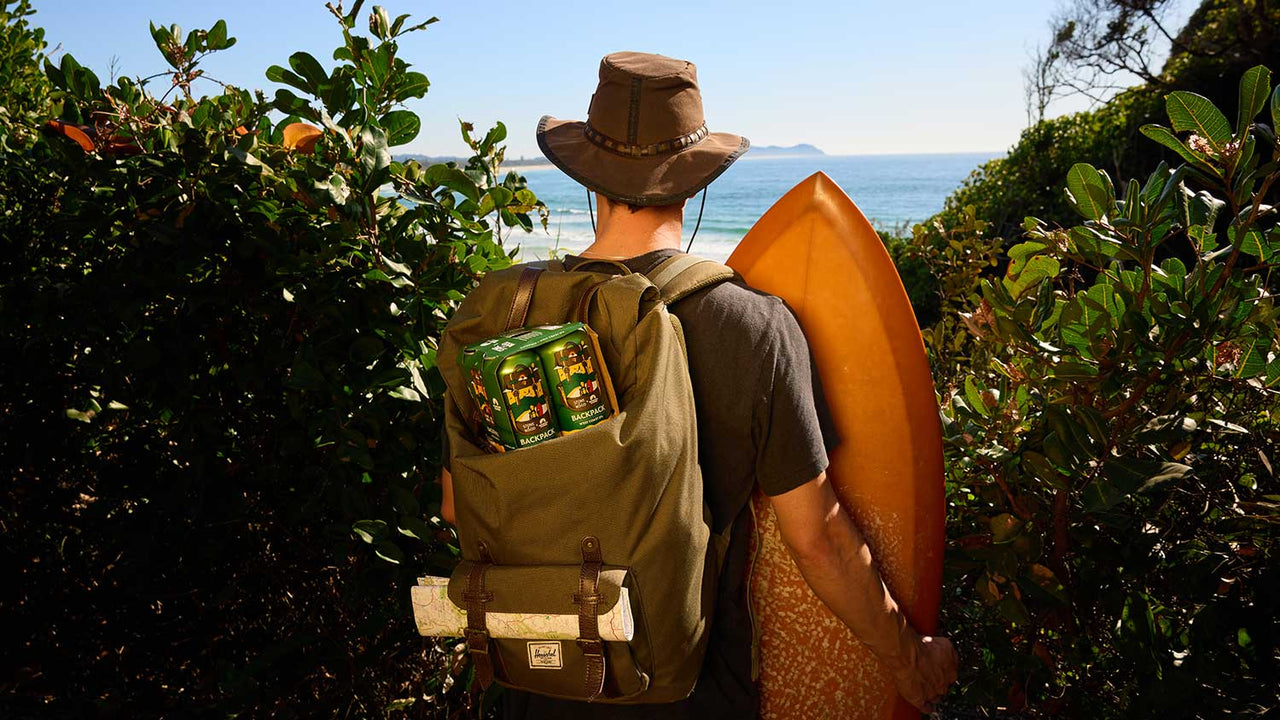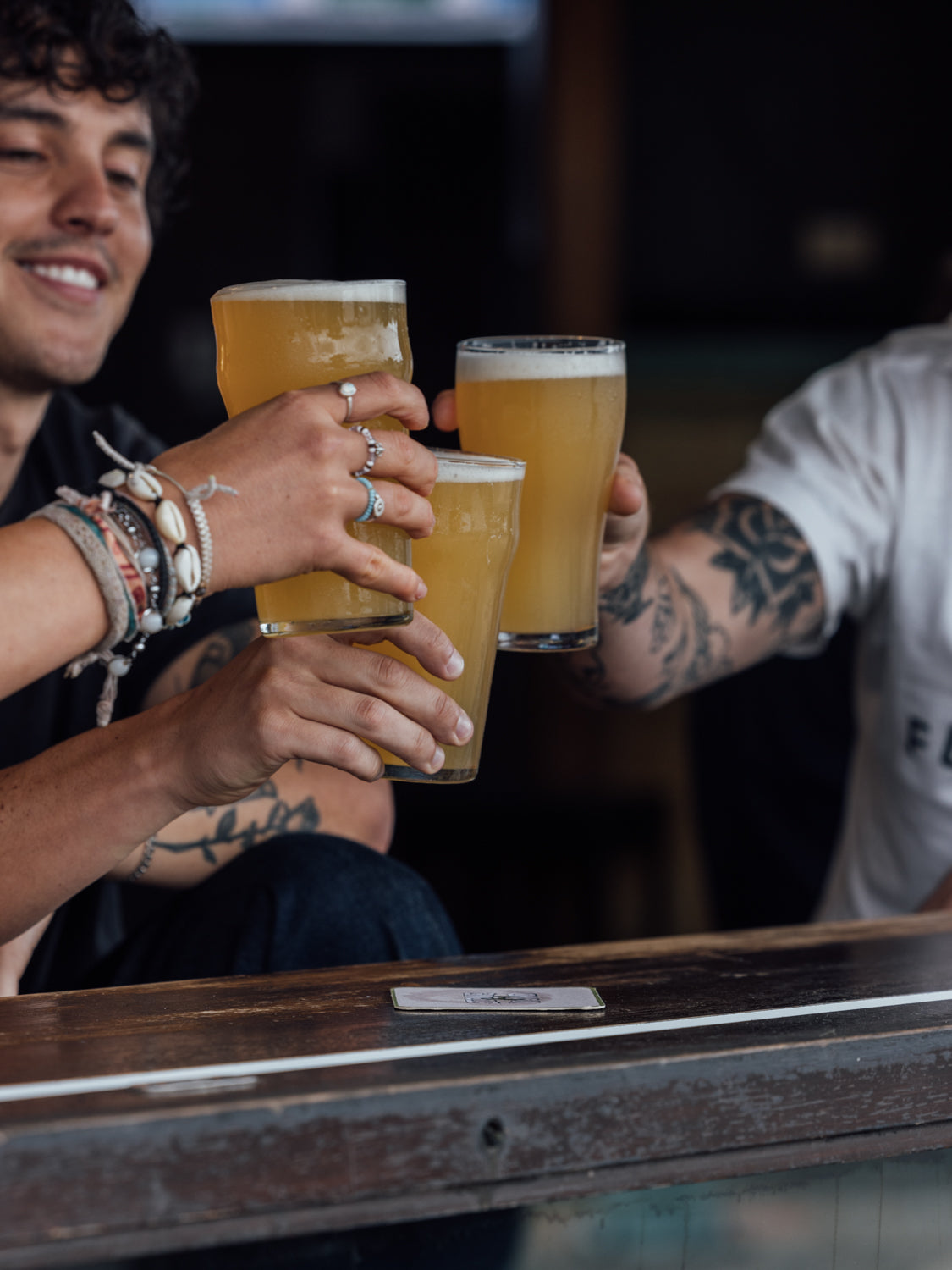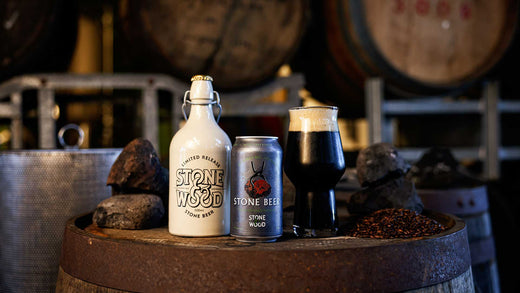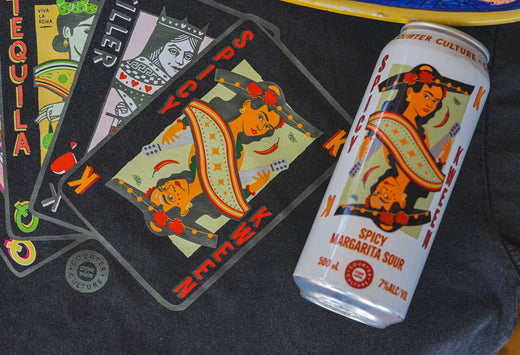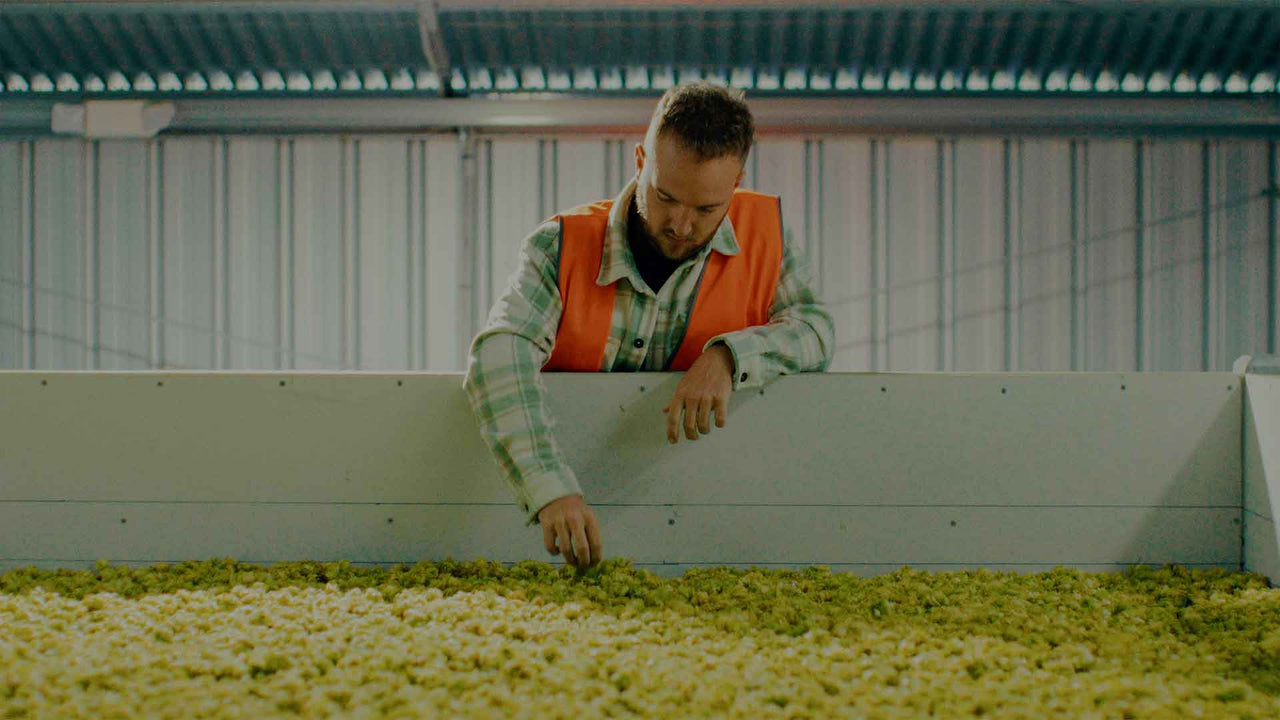Jess walks us through the magic of beer: malt, water, hops and yeast
We all love the stuff – but what makes beer, beer?
Welcome to part two of the Stone & Wood virtual brewery tour, where our resident Canadian beer geek and Tasting Room manager Jess walks us through the ingredients of beer.
That is, malt, water, hops and yeast, and how these are processed into delicious beer.
This part of the tour is fairly educational, so we recommend popping open a fresh beer and sitting down somewhere quiet where you can soak up Jess’s knowledge, covering the German purity law – aka the Reinheitsgebot –, malting, water types and plenty of beer-science fun facts. Did you know hops are related to cannabis?
After watching this video, you should understand how the quality and treatment of these four ingredients influence the beer you drink – and hey, it might help you better choose between beers at your local pub (when it opens – you’ll be ready).
Grab that beer, take a comfy seat and enjoy another round of beer education and laughs.
Watch part one, The Space here
Why do you add water to beer?
This might be short and sweet, but given that water makes up more than 90% of beer, the water supply can make a drastic difference in a brew. All over the planet, water supplies vary with mineral contents such as calcium, sodium, magnesium, sulfate, etc.
Traditionally, where a brewery was located geographically and what water supply they had to work with naturally lent itself to being well-suited to certain styles of beer over others.
The most common example of this is a Czech Pilsner from the town of Pilsen in the Czech Republic, whose water supply is very soft, therefore perfect for creating a nice, light, refreshing lager.
Conversely, the deep wells of Burton-upon-Trent in England have a very harsh water supply, which is excellent for making full-flavored pale ales.
These days, brewers can purify and adjust the water with brewing salts to mimic water that will work best with whatever style they are brewing.
Soft Water Beers:
Soft water is water that contains low concentrations of dissolved minerals, particularly calcium and magnesium ions.
Pilsners and Pale Lagers: These beers benefit from soft water because it helps showcase the delicate flavours of the malt and hops without interference from minerals.
Light Ales: Like pilsners, light ales can benefit from the clean, crisp character that soft water provides.
Hard Water Beers:
Hard water is water that contains a high concentration of dissolved minerals, primarily calcium and magnesium ions.
Dark Ales and Stouts: The higher mineral content in hard water can enhance the flavours of roasted malts, adding complexity and richness to these styles.
Bitter Ales: Hard water can accentuate hop bitterness, which is desirable in styles like IPAs and English bitters.
Belgian Ales: Some Belgian styles benefit from the mineral character of hard water, contributing to the unique flavour profiles of these beers.
What is the purpose of malt in beer?
Malts are the backbone of beer, providing not just sweetness but a myriad of flavours, colours, and textures. They're essentially grains (usually barley) that have been germinated, dried, and roasted to perfection.
Different malts undergo varying degrees of roasting, from pale malts for light beers to deeply roasted malts for dark and rich brews. This roasting process influences the flavours and colours they impart to the beer.
🌾 Pale Malts: These are the foundation of most beers, offering a clean and neutral flavour profile. They contribute sweetness and light colours to brews like lagers and pale ales.
🌾 Munich and Vienna Malts: These malts add depth and maltiness, bringing flavours of bread, toast, and biscuits. They're often used in amber ales, Oktoberfest beers, and bocks.
🌾 Crystal Malts: Known for their caramelised sugars, crystal malts contribute sweetness, body, and colours ranging from golden to deep amber. They're common in ales like IPAs and porters.
🌾 Chocolate and Black Malts: These deeply roasted malts provide dark colors, rich flavours of coffee, chocolate, and roasted nuts, and a touch of bitterness. They're essential for stouts, porters, and dark ales.
🌾 Roasted Barley: With intense roasted flavors and a dry finish, roasted barley adds complexity to stouts and robust porters, often lending notes of coffee, dark chocolate, and even hints of smoke.
Beyond flavour, malts also play a critical role in the brewing process. During mashing, enzymes in the malt convert starches into fermentable sugars, which yeast later transforms into alcohol and carbonation during fermentation.
So next time you savour a beer, appreciate the malts that went into crafting its unique character. Cheers to the diverse world of malts and the delicious brews they create!
How do hops affect beer?
Hops play a crucial role in brewing beer, contributing to both the flavor and aroma of the final product. Here are some key roles and impacts of hops in brewing:
- Bitterness: Hops are primarily known for their bittering effect on beer. During the brewing process, hops release alpha acids, which add bitterness to balance the sweetness of malted barley.
- Flavor: Hops contribute a wide range of flavors to beer, depending on the hop variety used and how it's added during brewing. Common hop flavors include citrus, pine, floral, herbal, spicy, and fruity notes.
- Aroma: Hops also add aroma to beer, enhancing its overall sensory experience. The volatile oils in hops produce aromas that range from earthy and grassy to tropical and citrusy, depending on the hop variety.
- Stability: Hops have antimicrobial properties that help preserve beer and extend its shelf life by inhibiting the growth of unwanted bacteria and yeast.
- Foam stability: Hops contribute to the formation and retention of beer foam, which is an important characteristic in beer appearance and mouthfeel.
Overall, hops play a multifaceted role in brewing, influencing the bitterness, flavor complexity, aroma profile, stability, and visual appeal of the final beer product.
Different hop varieties and brewing techniques can be used to achieve a wide range of beer styles with distinct hop characteristics.

